Ukraine Before The Russian War
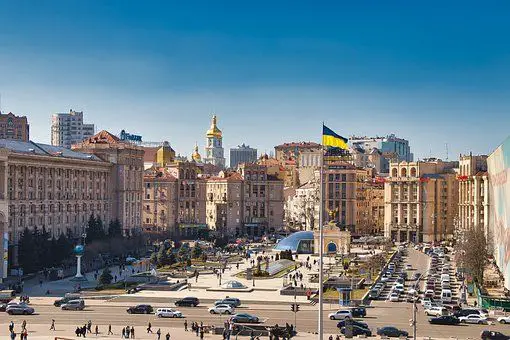
Ukraine, the second-largest country in Europe, is situated in Eastern Europe, bordered by Russia to the east, Belarus to the north, Poland, Slovakia, and Hungary to the west, and Romania and Moldova to the south.
Ukraine has a rich history, a diverse culture, a flourishing economy, and stunning natural landscapes. In this article, we will explore Ukraine before the Russian War, highlighting its land area, population, culture, tourism, economy, hospitality, entertainment, education, food, and many more.
Historical Background
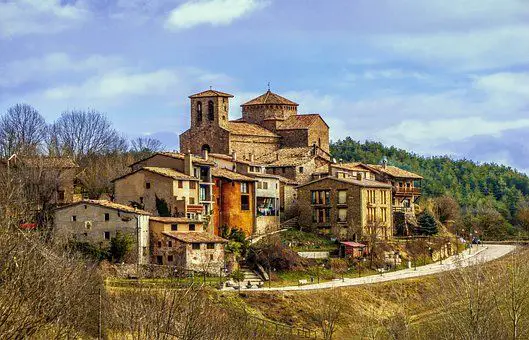
Ukraine has a rich and diverse history, with a cultural heritage that stretches back to ancient times. The first known civilization in the region was the Cucuteni-Trypillian culture, which existed from around 4800 BCE to 3200 BCE.
This culture was known for its advanced agriculture, as well as for its distinctive pottery and architecture.
In the Middle Ages, the territory of modern-day Ukraine was inhabited by a variety of tribes and ethnic groups, including the Slavs, the Khazars, and the Kievan Rus'.
The Kievan Rus' was a powerful East Slavic state that existed from the 9th to the 13th centuries. It was centered around the city of Kiev and was known for its cultural and economic achievements.
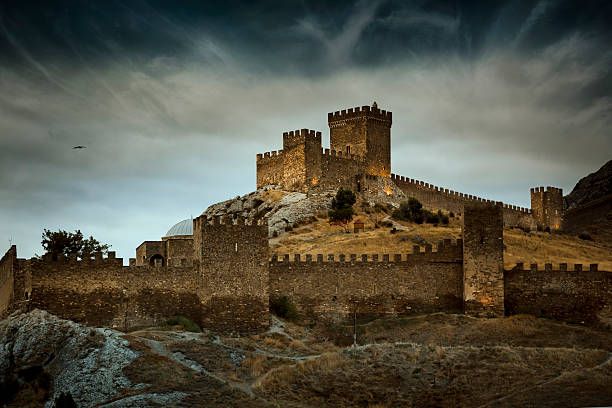
During the 13th and 14th centuries, the Mongol Empire conquered the Kievan Rus', leading to a period of political and cultural decline.
In the late 14th century, the Grand Duchy of Lithuania and the Kingdom of Poland formed a union that included much of modern-day Ukraine.
In the 16th and 17th centuries, Ukraine was divided between the Polish-Lithuanian Commonwealth and the Ottoman Empire.
During this period, the Cossacks emerged as a distinct social group in Ukraine, known for their military prowess and independent spirit.
In the late 18th century, the Russian Empire annexed much of modern-day Ukraine, leading to a period of Russification and suppression of Ukrainian culture and language.

In the late 19th century, a Ukrainian national movement emerged, seeking greater autonomy and cultural recognition.
During World War I, Ukraine declared independence and formed the Ukrainian People's Republic, but its independence was short-lived. In 1922, Ukraine became a republic within the Soviet Union, and its culture and language were suppressed under Soviet rule.
In 1991, Ukraine declared independence following the collapse of the Soviet Union. Since then, Ukraine has faced a number of challenges, including political instability, economic hardship, and ongoing conflict with Russia.
However, Ukraine's rich cultural heritage and diverse population continue to inspire hope for the future.
Land Area

Ukraine is the second-largest country in Europe after Russia, with a land area of approximately 603,628 square kilometers (233,062 square miles).
It is located in Eastern Europe and shares borders with Russia to the east and northeast, Belarus to the north, Poland, Slovakia, and Hungary to the west, and Romania and Moldova to the southwest.
Ukraine's landscape is diverse and includes a mix of flat plains, rolling hills, and mountainous regions. The country's largest and most fertile region is the Ukrainian Plain, which stretches from the southwestern corner of the country to the northeast.
The Carpathian Mountains in the west are another significant feature, with the highest peak, Mount Hoverla, reaching an elevation of 2,061 meters (6,762 feet).
Ukraine is also home to many rivers, including the Dnieper, which is the fourth-longest river in Europe and flows through the heart of the country. Other major rivers in Ukraine include the Dniester, the Donets, and the Southern Bug.
Overall, Ukraine's land area and diverse landscape make it a unique and fascinating country to explore, with a range of natural and cultural attractions to discover.
Population

As of 2021, the population of Ukraine is estimated to be approximately 43 million people, making it the 32nd most populous country in the world. The country has a relatively low population density of around 75 people per square kilometer (194 people per square mile), due in part to its large land area and diverse landscape.
Ukraine's population is diverse and includes a mix of ethnic groups, with Ukrainians being the largest group at approximately 78% of the population.
Other significant ethnic groups in Ukraine include Russians (17%), Belarusians (0.6%), and Crimean Tatars (0.5%). There are also smaller communities of Armenians, Jews, Roma, and other ethnic groups.
Ukraine has a relatively young population, with a median age of approximately 41 years old. However, the country is facing demographic challenges due to low birth rates and emigration, particularly among young people seeking economic opportunities abroad.
Overall, Ukraine's population is an important and dynamic aspect of the country's culture and society, with a rich mix of ethnic groups and traditions. However, the country's demographic challenges present significant economic and social issues that will need to be addressed in the coming years.
Culture
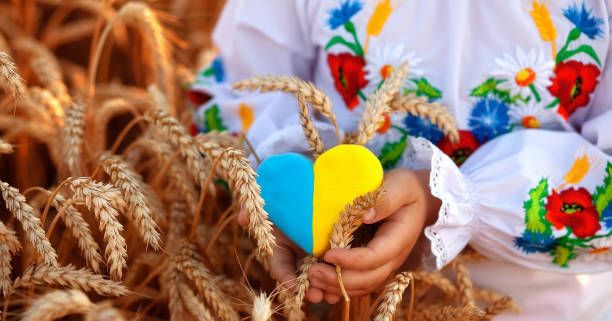
Ukrainian culture is rich and diverse, with a long history that dates back centuries. Before the Russian war, Ukraine's culture was known for its folk traditions, music, dance, literature, and visual arts.
Folk traditions are an essential part of Ukrainian culture, and many traditional customs and practices are still celebrated today. These include events such as Kupala Night, a summer solstice celebration, and Christmas Eve, a feast that includes traditional dishes such as kutia (a sweet grain pudding) and varenyky (dumplings).
Ukrainian music is also an integral part of the country's cultural heritage. Folk music is particularly popular, and traditional instruments such as the bandura (a type of lute) and the kobza (a type of lute with a long neck) are commonly used.
Dance is another important aspect of Ukrainian culture, with many traditional dances still performed today. These include the hopak, a lively and energetic dance that is often accompanied by music played on the bandura.
Ukraine has also produced many prominent writers, poets, and artists throughout its history. Taras Shevchenko, a poet and painter, is considered one of Ukraine's most significant cultural figures. Other prominent writers include Ivan Franko and Lesya Ukrainka.
Visual arts are also an essential part of Ukrainian culture, with traditional crafts such as embroidery, pottery, and weaving still practiced today. Ukrainian artists have also made significant contributions to the world of painting, sculpture, and graphic arts.
Overall, Ukraine's culture is diverse and vibrant, with a rich history and deep roots in its traditions and customs.
Language and Ethnicity
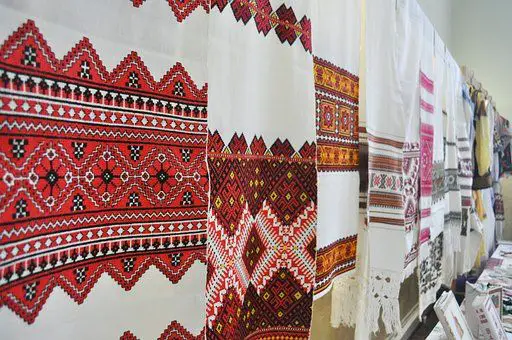
Ukraine is a country located in Eastern Europe, and its official language is Ukrainian. However, a significant portion of the population also speaks Russian, especially in the eastern and southern regions of the country.
Ukraine is home to several ethnic groups, including Ukrainians, Russians, Crimean Tatars, Belarusians, and others. The majority of the population is Ukrainian, with a significant minority of Russians.
Before the Russian war, Ukraine was a diverse country with a rich cultural heritage. Ukrainians have their distinct language, customs, and traditions, which they have preserved over centuries.
They are known for their folk music, dance, and traditional costumes, which reflect their rural lifestyle and close ties to nature.

The Russian-speaking population in Ukraine was largely concentrated in the eastern and southern regions of the country, where they have maintained their cultural ties to Russia.
However, many Russian speakers also identify as Ukrainian and have integrated into Ukrainian society.
The Crimean Tatars, a Muslim ethnic group, are also an important part of Ukraine's cultural diversity.
They have a distinct language and customs and have faced persecution and displacement throughout their history.
Overall, Ukraine's cultural and ethnic diversity has contributed to its unique identity and enriched its history and traditions.
Arts and Literature

Ukraine has a rich cultural heritage, with a vibrant arts and literature scene that dates back centuries. Ukrainian literature and art have been shaped by a range of influences, including the country's Slavic roots, its long history of political and cultural suppression, and its unique regional traditions.
Ukrainian literature has a long and distinguished history, with works dating back to the medieval period. One of the most famous works of Ukrainian literature is the epic poem "The Tale of Igor's Campaign," which was written in the 12th century and tells the story of a prince's failed military campaign against the Polovtsian nomads.
Other notable Ukrainian writers include Taras Shevchenko, who is often considered the father of modern Ukrainian literature, as well as Ivan Franko, Lesya Ukrainka, and Mykhailo Kotsiubynsky.
Ukrainian art is similarly diverse and has been influenced by a range of styles and traditions. One of the most famous Ukrainian artists is Kazimir Malevich, who is known for his pioneering work in the field of abstract art.

Other notable Ukrainian artists include Ivan Aivazovsky, who was known for his seascapes, and Sofia Mykhailivna Nalepinska-Bohuslavets, who was one of the first women in Ukraine to receive formal art training.
In addition to literature and art, Ukraine is also known for its rich folk traditions, including music, dance, and embroidery. Ukrainian folk music is characterized by its use of traditional instruments such as the bandura and the kobza, as well as its intricate vocal harmonies.
Ukrainian folk dance is similarly varied, with each region of the country having its own distinctive style.
Ukraine's arts and literature scene is an important and dynamic aspect of the country's culture and heritage, with a rich mix of influences and traditions that continue to inspire artists and writers today.
Music and Dance

Music and dance are an integral part of Ukrainian culture, with a long and rich tradition that spans centuries.
Ukrainian music and dance are characterized by their energetic rhythms, intricate footwork, and colorful costumes, and are often associated with the country's rural and folk traditions.
Ukrainian folk music has a long history and is characterized by its use of traditional instruments such as the bandura, kobza, and tsymbaly.
The bandura, in particular, is a popular instrument in Ukraine and is known for its distinctive sound and complex finger-picking techniques.
Ukrainian folk music also features a range of vocal styles, including solo and choral singing, and often incorporates elements of storytelling and poetry.

Ukrainian folk dance is similarly diverse and is characterized by its lively footwork, colorful costumes, and strong sense of rhythm. Each region of Ukraine has its own unique style of folk dance, with some of the most popular including the Hopak, Kozachok, and Arkan.
Ukrainian folk dance is often performed in groups, with dancers moving in intricate formations and incorporating elements of acrobatics and gymnastics.
In addition to folk music and dance, Ukraine is also home to a thriving contemporary music scene, with a range of genres and styles represented.
Ukrainian pop music, in particular, has gained a strong following in recent years, with artists such as Okean Elzy, Dzidzio, and Jamala achieving international success.
Overall, music and dance are an important and vibrant aspect of Ukrainian culture, with a rich and diverse tradition that continues to inspire and captivate audiences around the world.
Religion

Religion has played an important role in Ukrainian history and culture, with a range of faiths represented throughout the country. The dominant religion in Ukraine is Christianity, with the majority of Ukrainians identifying as either Orthodox Christians or members of the Ukrainian Greek Catholic Church.
However, there are also significant communities of Roman Catholics, Protestants, and Jews, among others.
The Ukrainian Orthodox Church is the largest religious denomination in Ukraine, with millions of adherents across the country.
The Ukrainian Orthodox Church is divided into three main branches: the Ukrainian Orthodox Church (Moscow Patriarchate), which is affiliated with the Russian Orthodox Church; the Ukrainian Orthodox Church (Kyiv Patriarchate), which is not recognized by the other Orthodox churches; and the Ukrainian Autocephalous Orthodox Church, which is recognized by some but not all Orthodox churches.
The Ukrainian Greek Catholic Church is another important religious denomination in Ukraine, with millions of adherents across the country.
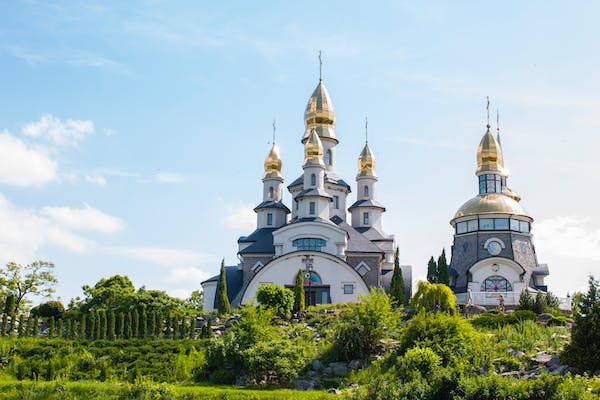
The Ukrainian Greek Catholic Church is a Byzantine Rite Eastern Catholic Church, meaning that it is in communion with the Roman Catholic Church but retains many of the traditions and liturgical practices of the Eastern Orthodox Church.
In addition to Orthodox and Catholic Christianity, there are also significant communities of Protestant Christians in Ukraine, including Baptists, Seventh-day Adventists, and Pentecostals, among others.
There is also a small but historic Jewish community in Ukraine, which has played an important role in the country's cultural and intellectual life.
Overall, religion is an important and diverse aspect of Ukrainian culture, with a range of faiths represented throughout the country.
While Christianity is the dominant religion in Ukraine, there are also significant communities of other faiths, reflecting the country's long history of religious diversity and tolerance.
Cuisine

Ukrainian cuisine is known for its hearty, flavorful dishes that make use of a range of local ingredients, such as potatoes, cabbage, beets, and various types of meat.
Before the Russian War, Ukrainian cuisine was largely influenced by the country's rural traditions, with many dishes originating from the countryside and reflecting the seasons and local ingredients.
One of the most popular dishes in Ukrainian cuisine is borscht, a hearty soup made with beets, cabbage, potatoes, and various types of meat, such as beef or pork. Borscht is typically served with sour cream and fresh dill, and is considered a staple of Ukrainian cuisine.
Another popular Ukrainian dish is varenyky, a type of dumpling made with flour and stuffed with a range of fillings, such as potatoes, cheese, or meat. Varenyky are typically served with sour cream or butter and are a popular comfort food in Ukraine.

Other popular Ukrainian dishes include holubtsi (stuffed cabbage rolls), pyrizhky (stuffed buns), and kovbasa (sausage). These dishes are often served as part of a traditional Ukrainian meal, which may include multiple courses and a range of sides and accompaniments.
In addition to its hearty, flavorful dishes, Ukrainian cuisine is also known for its rich tradition of baking and pastry-making. Popular Ukrainian desserts include medivnyk (honey cake), pampushky (fried doughnuts), and babka (a sweet bread made with raisins and other dried fruits).
Ukrainian cuisine is a rich and diverse culinary tradition that reflects the country's long history and cultural heritage.
Before the Russian War, Ukrainian cuisine was largely influenced by the country's rural traditions and made use of local ingredients and seasonal flavors to create hearty and flavorful dishes that continue to be enjoyed by Ukrainians and visitors alike.
Education

Education has long been an important aspect of Ukrainian culture and identity, with a strong tradition of learning and intellectual achievement dating back centuries.
Before the Russian War, education in Ukraine was largely influenced by the country's historical and cultural traditions, as well as by its political and economic context.
In the early years of Ukraine's history, education was largely the province of the church, with monasteries and religious orders playing a key role in the country's intellectual life.
However, as Ukraine began to modernize and industrialize in the 19th and early 20th centuries, education became increasingly secularized and focused on practical skills and knowledge.
One of the key developments in Ukrainian education before the Russian War was the establishment of a network of schools and universities across the country.

In the late 19th and early 20th centuries, a number of universities were founded in Ukraine, including the University of Lviv, the University of Kyiv, and the University of Kharkiv.
These universities played a key role in educating the country's intellectuals and professionals, and helped to establish Ukraine as a center of learning and scholarship in the region.
In addition to universities, there were also a number of secondary and primary schools in Ukraine before the Russian War, many of which were run by the state or by religious organizations.
These schools focused on providing students with a range of skills and knowledge, including literacy, numeracy, and practical skills such as agriculture and carpentry.

Despite these achievements, education in Ukraine before the Russian War was not without its challenges. One of the key obstacles to education in Ukraine was the country's economic and social inequality, which meant that many families could not afford to send their children to school.
Additionally, there were linguistic and cultural barriers to education, particularly in regions where Ukrainian was not widely spoken or taught.
Education in Ukraine before the Russian War was a dynamic and evolving field, reflecting the country's long history and cultural traditions, as well as its modernization and development in the 19th and early 20th centuries.
While there were challenges to education in Ukraine, including economic and linguistic barriers, the country's strong tradition of learning and intellectual achievement helped to establish it as a center of scholarship and education in the region.
Sports
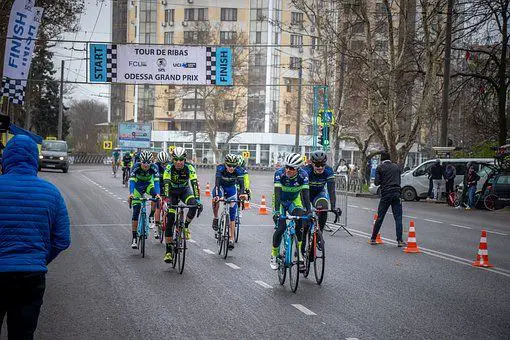
Sports have been an important part of Ukrainian culture for centuries, with a long tradition of physical activity and athletic competition.
Before the Russian War, Ukraine was home to a range of sports and athletic pursuits, reflecting the country's diverse geography and cultural heritage.
One of the most popular sports in Ukraine before the Russian War was football (soccer), which was played by both amateur and professional teams across the country.
Football clubs such as Dynamo Kyiv, Shakhtar Donetsk, and Dnipro Dnipropetrovsk were well-known for their success on the national and international stage, and helped to establish Ukraine as a center of footballing excellence in the region.

In addition to football, other popular sports in Ukraine before the Russian War included boxing, wrestling, and weightlifting.
Ukraine had a strong tradition of producing world-class athletes in these sports, with many Ukrainian athletes achieving success at the Olympic Games and other international competitions.
Outside of organized sports, there were also a range of traditional Ukrainian athletic pursuits that were popular before the Russian War. These included folk dances, such as the hopak and the kolomiyka, which were often performed at festivals and other cultural events.
Traditional martial arts, such as hryvna (wrestling) and bojovyj hopak (combat hopak), were also practiced by some Ukrainians as a means of self-defense and physical conditioning.

Despite the popularity of sports and athletic pursuits in Ukraine before the Russian War, there were also challenges to the development of sports in the country.
These included a lack of funding and resources for sports programs and facilities, as well as political and social barriers to the participation of certain groups, such as women and ethnic minorities.
Overall, sports and physical activity were an important part of Ukrainian culture and identity before the Russian War, reflecting the country's long tradition of athletic competition and physical prowess.
While there were challenges to the development of sports in Ukraine, the country's strong tradition of producing world-class athletes and its diverse range of athletic pursuits helped to establish it as a center of sports excellence in the region.
Tourism

Ukraine has long been a popular destination for tourists, thanks to its rich history, diverse cultural traditions, and stunning natural landscapes.
Before the Russian War, Ukraine's tourism industry was a growing and vibrant sector of the country's economy, with a range of attractions and destinations that drew visitors from around the world.
One of the most popular destinations for tourists in Ukraine before the Russian War was the city of Kyiv, which was renowned for its beautiful architecture, rich cultural heritage, and vibrant nightlife.
Visitors to Kyiv could explore the city's ancient churches and monasteries, stroll along the banks of the Dnipro River, or enjoy a night out in the city's many bars, clubs, and restaurants.
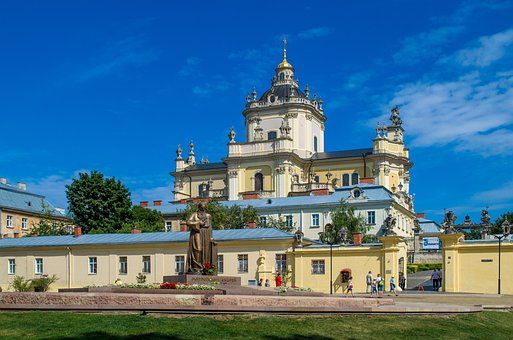
Another popular destination for tourists in Ukraine was the city of Lviv, which was known for its charming old town, medieval castles and fortresses, and rich cultural and artistic heritage.
Visitors to Lviv could take a walking tour of the city's historic streets and buildings, visit museums and art galleries, or sample the city's famous coffee and chocolate culture.
Outside of the cities, there were also a range of natural attractions that drew tourists to Ukraine before the Russian War.
The Carpathian Mountains, which run along the country's western border, were a popular destination for hikers and nature lovers, offering stunning views and a range of outdoor activities.

The Black Sea coast, which stretches along Ukraine's southern border, was also a popular destination for tourists, with its warm waters, sandy beaches, and vibrant resort towns.
In addition to its attractions and destinations, Ukraine's tourism industry was also supported by a range of infrastructure and services.
Before the Russian War, there were a range of hotels, restaurants, and transportation options available for tourists, making it easy and convenient for visitors to explore the country and enjoy all that it had to offer.
Despite the challenges posed by political and economic instability in the region, Ukraine's tourism industry continued to grow and thrive before the Russian War, thanks to its rich cultural heritage, diverse attractions, and commitment to providing visitors with a memorable and enjoyable travel experience.
Economy

Before the Russian War, Ukraine's economy was developing rapidly, driven by a combination of factors such as its strategic location, rich natural resources, and skilled workforce.
Ukraine was a major producer of agricultural products, heavy industry goods, and had a significant technology sector.
Agriculture was a crucial component of Ukraine's economy, contributing significantly to the country's GDP and exports.
Ukraine was known as the "breadbasket of Europe," as it was a major producer of wheat, corn, barley, and other crops. Ukraine was also a major producer of sunflower oil, sugar, and other food products.

Agricultural production in Ukraine was supported by a large number of private farms, as well as larger agribusiness enterprises.
Industry was another important sector of Ukraine's economy, with a focus on heavy manufacturing, such as metallurgy, machinery, and chemical production. Ukraine had a large industrial base that included major steel plants, chemical factories, and other heavy industry facilities.
These industries were supported by a skilled workforce, as well as investments in infrastructure and technology.
In addition to agriculture and industry, Ukraine also had a growing technology sector, with a range of startups and established companies working in areas such as software development, IT outsourcing, and e-commerce.

Ukraine was known for its highly skilled IT professionals, and had become a popular destination for outsourcing services due to its relatively low labor costs and high quality of work.
Ukraine's economy was growing and diversifying before the Russian War, thanks to its strategic location, rich natural resources, and skilled workforce.
However, there were also challenges facing the economy, such as corruption, inadequate infrastructure, and political instability, that could have hindered its continued growth and development.
Politics
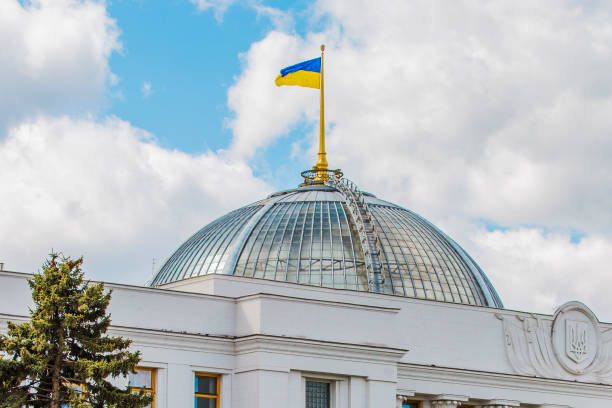
Before the Russian War, Ukraine's politics were characterized by a complex and often tumultuous mix of democratic and authoritarian tendencies.
Ukraine had achieved independence in 1991 following the collapse of the Soviet Union, but the country's transition to democracy and market economy was not smooth, and there were ongoing struggles over political power and economic reform.
In the early years of Ukraine's independence, political power was concentrated in the hands of a small group of oligarchs who controlled much of the country's economy and political institutions.
These oligarchs often worked closely with the government, using their wealth and influence to shape policies and regulations to their advantage. This created a situation in which the interests of the oligarchs often took precedence over the needs of ordinary citizens.
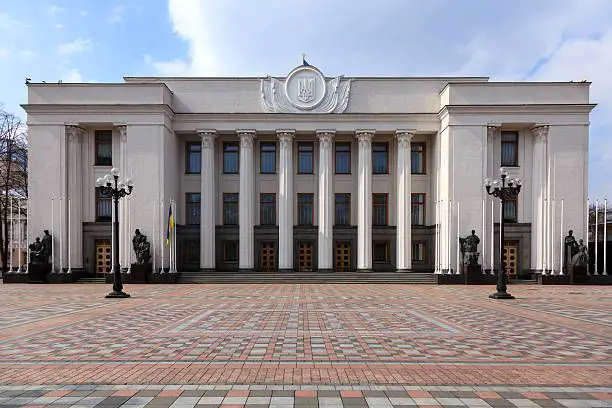
However, over time, there were increasing calls for greater democracy and transparency in Ukraine's political system. This led to the "Orange Revolution" of 2004, which saw mass protests and demonstrations calling for fair elections and an end to corruption.
These protests were successful in bringing about a new election, in which Viktor Yushchenko was elected as president.
Under Yushchenko's leadership, there were efforts to strengthen Ukraine's democracy and institutions, including reforms to the constitution and greater transparency in government.
However, these efforts were often stymied by political opposition and resistance from entrenched interests.

In the years leading up to the Russian War, Ukraine was facing significant political and economic challenges, including ongoing corruption, a struggling economy, and a lack of progress on reforms.
These challenges contributed to the growing unrest and dissatisfaction among many Ukrainians, which ultimately led to the protests and demonstrations that sparked the Russian War.
Overall, Ukraine's politics before the Russian War were characterized by a complex mix of democratic and authoritarian tendencies, with ongoing struggles over power and influence.
While there were efforts to strengthen democracy and institutions, there were also significant challenges that could have hindered Ukraine's progress and development.
Hospitality

Ukraine has a long tradition of hospitality, which is deeply rooted in its culture and customs. Before the Russian war, Ukrainian hospitality was renowned for its warmth, generosity, and sincerity.
Ukrainians have a strong sense of community and are known for their friendly and welcoming nature. Guests are treated with respect and often offered food, drink, and comfortable accommodations.
It is not uncommon for Ukrainians to go out of their way to help strangers or visitors, and they take great pride in making their guests feel at home.
Food is an essential part of Ukrainian hospitality, and traditional Ukrainian cuisine is famous for its hearty and flavorful dishes. Guests are often greeted with a table full of food, including dishes such as borscht, varenyky (dumplings), and salo (cured pork fat).

Ukrainians also have a strong tradition of toasting, and it is customary to raise a glass and make a heartfelt speech before drinking. This is a way to express gratitude, share stories, and celebrate life's milestones.
In rural areas, it is common for guests to be offered a place to sleep in a spare room or a cozy hayloft. In cities, hotels and guesthouses provide comfortable accommodations for visitors.
Overall, Ukrainian hospitality is an integral part of the country's culture and reflects the warmth and generosity of its people.
Entertainment

The entertainment industry in Ukraine before the Russian War was a vibrant and growing sector, with a range of music, film, and television productions that were gaining popularity both domestically and internationally.
Ukraine had a rich cultural heritage that was reflected in its entertainment industry, and there was a growing sense of pride and identity among many Ukrainians that was reflected in their entertainment choices.
Music was an important part of Ukraine's entertainment industry, with a thriving scene that included a mix of traditional folk music and modern pop and rock.
Many Ukrainian musicians were gaining international recognition, and there were a growing number of music festivals and concerts that were drawing large crowds.

Some of the most popular Ukrainian musicians before the Russian War included Ruslana, Svyatoslav Vakarchuk, and Okean Elzy.
Film and television production in Ukraine was also on the rise before the Russian War, with a growing number of Ukrainian films and TV shows being produced and gaining recognition both domestically and internationally.
The Ukrainian film industry had a long and rich history, with a focus on historical and cultural themes. The 2004 film "A Driver for Vera" was nominated for an Academy Award for Best Foreign Language Film, and other Ukrainian films such as "Mamay" and "The Guide" had also gained critical acclaim.
Television production in Ukraine was also on the rise, with a range of popular shows that were gaining a following both domestically and in other countries.
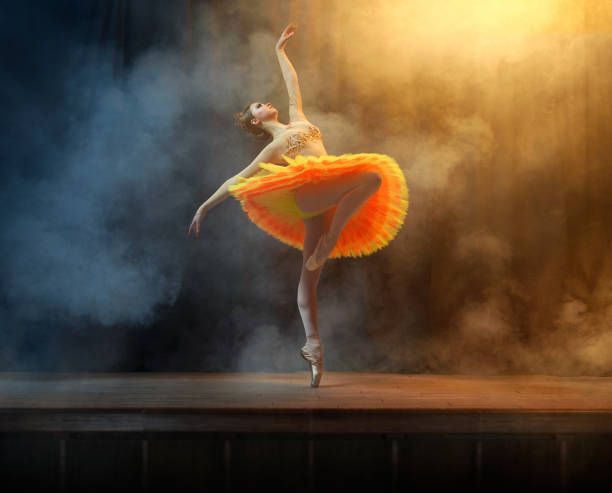
Some of the most popular Ukrainian TV shows before the Russian War included "Servant of the People," a political satire that later inspired a real-life political party in Ukraine, and "The Sniffer," a crime drama that was popular in Ukraine and other countries.
Overall, the entertainment industry in Ukraine before the Russian War was a growing and vibrant sector that reflected the country's rich cultural heritage and growing sense of national identity.
While the industry faced challenges such as funding and distribution, there was a sense of optimism and creativity that was driving it forward.
Natural Landscapes

Ukraine is a country with a diverse range of natural landscapes, from vast grassy steppes to the rugged peaks of the Carpathian Mountains. Before the Russian war, Ukraine's natural landscapes were known for their beauty and biodiversity.
The country's central region is dominated by the Ukrainian steppe, a vast grassland that stretches for hundreds of kilometers. The steppe is home to a variety of wildlife, including wolves, foxes, and various species of birds.
To the west of the country lies the Carpathian Mountains, a range that runs from Slovakia to Romania. The Carpathians are home to dense forests, alpine meadows, and numerous rivers and waterfalls. The region is popular with hikers, skiers, and nature enthusiasts.

The southern coast of Ukraine is bordered by the Black Sea, which is home to a diverse range of marine life. The sea's warm waters support a variety of fish species, and the coastline is dotted with sandy beaches and rocky coves.
Ukraine is also home to several national parks, including the Carpathian National Nature Park and the Askania-Nova Biosphere Reserve. These protected areas are home to rare and endangered species, including lynx, bison, and saiga antelope.
Ukraine's natural landscapes are an integral part of the country's identity and have played a significant role in its history and culture. From the vast steppe to the rugged mountains and pristine coastlines, Ukraine's natural beauty is a testament to its rich biodiversity and unique character.
Infrastructure
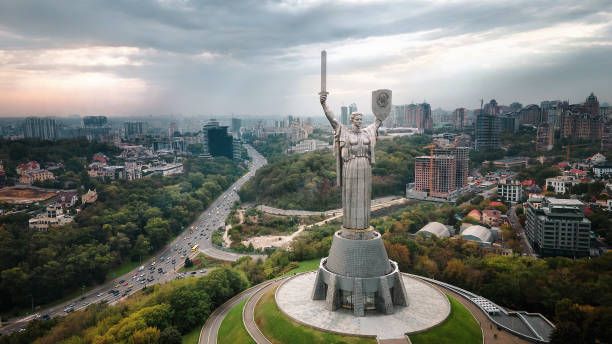
Before the Russian War, Ukraine's infrastructure was in need of significant investment and modernization.
While there had been some progress in upgrading the country's roads, bridges, and other transportation infrastructure, much of Ukraine's infrastructure remained outdated and in need of repair.
One of the biggest challenges facing Ukraine's infrastructure was the country's aging railway system. The railway network in Ukraine was extensive, but much of it was outdated and in need of modernization.
This had a negative impact on the country's ability to transport goods and people efficiently, and there were ongoing concerns about the safety and reliability of the railway system.
Another challenge facing Ukraine's infrastructure was its energy sector. Ukraine was heavily dependent on natural gas imports from Russia, which made the country vulnerable to price spikes and supply disruptions.
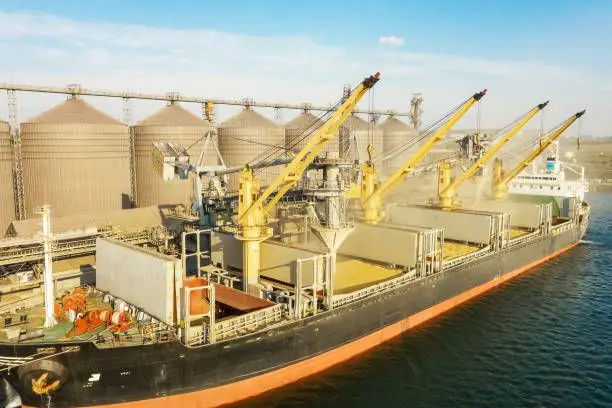
There were ongoing efforts to diversify Ukraine's energy sources and increase domestic production of natural gas and other fuels, but progress was slow.
The country's water supply infrastructure was also in need of modernization. Many of Ukraine's water treatment and distribution systems were outdated and in need of repair, and there were concerns about the quality and safety of the country's drinking water.
In addition to these challenges, Ukraine's telecommunications infrastructure was also in need of modernization. While there had been some progress in expanding access to high-speed internet and mobile phone coverage, much of the country still lacked reliable and affordable access to these services.
Ukraine's infrastructure before the Russian War was in need of significant investment and modernization. While there had been some progress in upgrading the country's transportation, energy, and telecommunications systems, much work remained to be done to bring Ukraine's infrastructure up to modern standards.
Military
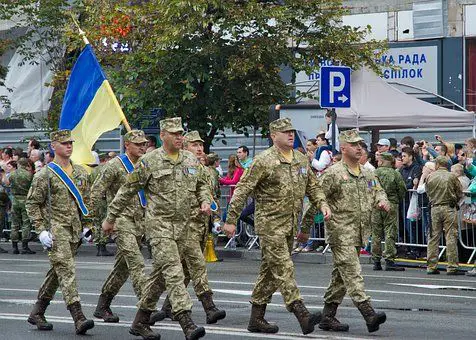
Before the Russian War, the Ukrainian military was a relatively small and poorly equipped force that faced significant challenges in modernizing and professionalizing.
Ukraine had inherited much of its military infrastructure from the Soviet era, and much of this infrastructure was outdated and in need of modernization.
One of the biggest challenges facing the Ukrainian military was a lack of funding. Ukraine's defense budget was relatively small, and much of the military's equipment was outdated or in need of repair.
This made it difficult for Ukraine to modernize its armed forces and compete with other regional powers.
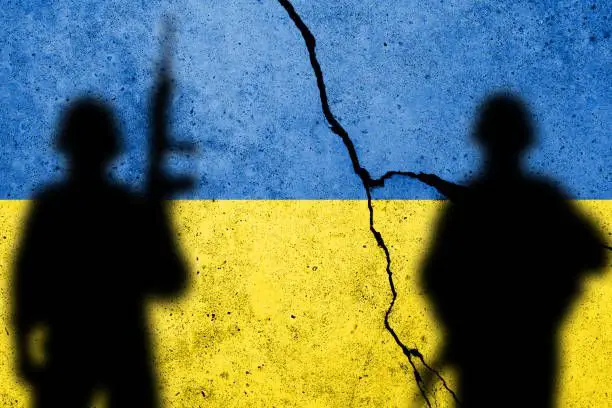
Another challenge facing the Ukrainian military was a lack of professionalization. Many Ukrainian soldiers were conscripts who had received only limited training, and there were ongoing concerns about corruption and poor leadership within the military.
These factors had a negative impact on the morale and effectiveness of the Ukrainian military.
Despite these challenges, there were some efforts to modernize the Ukrainian military before the Russian War. Ukraine had begun to work with NATO and other Western powers to modernize its armed forces and improve its capabilities.
There were also ongoing efforts to professionalize the military and improve its leadership and training.

However, the outbreak of the Russian War in 2014 exposed many of the weaknesses in the Ukrainian military.
The military was ill-prepared to respond to the Russian invasion of Crimea, and the subsequent conflict in eastern Ukraine highlighted many of the challenges facing the Ukrainian military.
Overall, before the Russian War, the Ukrainian military was a relatively small and poorly equipped force that faced significant challenges in modernizing and professionalizing.
While there were some efforts to improve the military's capabilities, much work remained to be done to bring the Ukrainian military up to modern standards.
Science and Technology

Before the Russian War, Ukraine had a strong tradition in science and technology, with many notable achievements in fields such as aerospace, mathematics, and computer science.
One of Ukraine's most significant achievements in science and technology was its contributions to the Soviet space program. Ukraine had a number of aerospace research and development centers, including the Yuzhnoye Design Office and the Antonov Design Bureau, which played a key role in the development of the Soviet space program.
Ukrainian scientists and engineers contributed to the design and development of a number of important Soviet space vehicles, including the Soyuz spacecraft and the Zenit satellite launch vehicle.

In addition to its achievements in aerospace, Ukraine also had a strong tradition in mathematics and computer science.
Ukrainian mathematicians had made significant contributions to fields such as algebra, geometry, and number theory, and Ukraine was home to a number of leading research institutions, including the Institute of Mathematics at the National Academy of Sciences of Ukraine.
Ukraine had also made significant investments in its telecommunications and information technology infrastructure before the Russian War.
The country had a relatively high level of internet penetration, and there were ongoing efforts to expand access to high-speed internet and other telecommunications services.

However, like many other areas of Ukrainian society, science and technology in Ukraine were impacted by corruption and underfunding.
Despite its achievements in certain fields, Ukraine lagged behind many other developed countries in terms of overall research and development spending, and there were ongoing concerns about the brain drain of talented scientists and researchers leaving the country.
Overall, before the Russian War, Ukraine had a strong tradition in science and technology, with notable achievements in aerospace, mathematics, and computer science.
However, the country faced challenges in terms of corruption, underfunding, and brain drain, which impacted its ability to compete with other developed countries in these fields.
Gender and Society
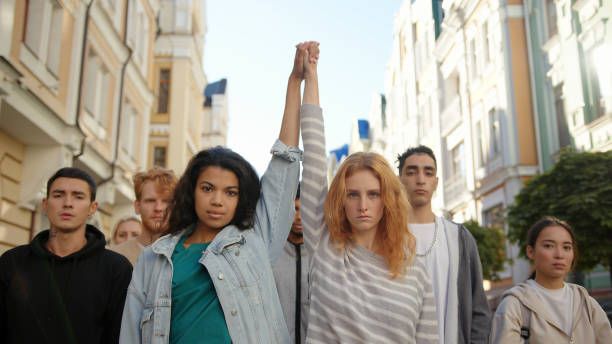
Before the Russian War, Ukraine was a society with deep-rooted gender inequalities, particularly in the areas of politics and the workforce.
Women in Ukraine were significantly underrepresented in politics, with only a small number of women serving in high-level political positions.
The Ukrainian parliament had one of the lowest rates of female representation in Europe, with only around 10% of parliamentarians being women.
This lack of representation had a significant impact on women's rights and the ability of women to participate fully in the political process.

In the workforce, women were also often relegated to lower-paid and less prestigious positions.
Women were more likely than men to work in low-paid industries such as textiles and retail, and were underrepresented in higher-paying fields such as science, technology, engineering, and mathematics (STEM).
Women also faced significant challenges in terms of workplace discrimination and sexual harassment, which limited their ability to advance in their careers.
However, there were also some positive developments in terms of gender and society before the Russian War.

Women's rights organizations and feminist movements had been gaining momentum in Ukraine, and there was increasing awareness of the need for gender equality in all aspects of society.
The government had also taken some steps to address gender inequality, such as implementing policies to increase women's representation in politics and supporting initiatives to promote women's entrepreneurship and economic empowerment.
Overall, before the Russian War, Ukraine was a society with significant gender inequalities, particularly in politics and the workforce. While there were some positive developments in terms of women's rights and gender equality, much work remained to be done to achieve true gender equality in Ukraine.
Human Rights

Before the Russian War, Ukraine had made some progress in promoting and protecting human rights, but there were still significant challenges in this area.
Freedom of expression was guaranteed by the Ukrainian constitution, but there were concerns about the government's ability to restrict media freedom and control information.
Journalists and media outlets faced pressure from the government, and there were incidents of violence against journalists, particularly those reporting on corruption and other sensitive issues.
The Ukrainian government had also taken steps to promote human rights in areas such as gender equality, disability rights, and minority rights. However, discrimination and violence against minority groups, particularly Roma and LGBT people, remained a significant concern.
There were also concerns about police brutality and abuse of power, and allegations of torture and mistreatment of prisoners.

In addition, Ukraine had a significant human trafficking problem, with many women and children being trafficked for sexual exploitation or forced labor.
The Ukrainian government had taken steps to address this issue, including signing international treaties and implementing policies to combat trafficking and provide support for victims, but more needed to be done to address the root causes of trafficking and protect vulnerable individuals.
Before the Russian War, Ukraine had made some progress in promoting and protecting human rights, but there were still significant challenges in this area.
The government needed to do more to protect media freedom, combat discrimination and violence against minority groups, and address the problem of human trafficking.
Environment

Before the Russian War, Ukraine's environment faced significant challenges, including air and water pollution, deforestation, and loss of biodiversity.
One of the biggest environmental challenges facing Ukraine was air pollution. Industrial activities and transportation emissions were major sources of pollution in urban areas, leading to high levels of particulate matter and other harmful pollutants.
This had significant negative impacts on public health, with high rates of respiratory illness and other health problems linked to air pollution.
Water pollution was also a major problem, with many of Ukraine's rivers and waterways contaminated by industrial and agricultural runoff, as well as untreated sewage.
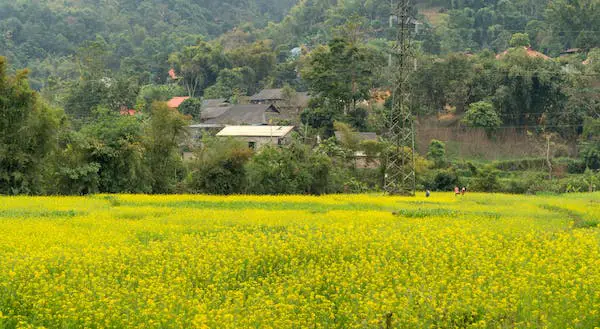
This had significant negative impacts on both human health and the environment, with water pollution contributing to the decline of fish populations and other aquatic species.
Deforestation was another significant environmental challenge facing Ukraine, with large areas of forest being cleared for agricultural and industrial activities.
This had negative impacts on biodiversity and the ability of forests to provide important ecosystem services, such as carbon storage and water regulation.
Despite these challenges, there were also some positive developments in Ukraine's environment before the Russian War.
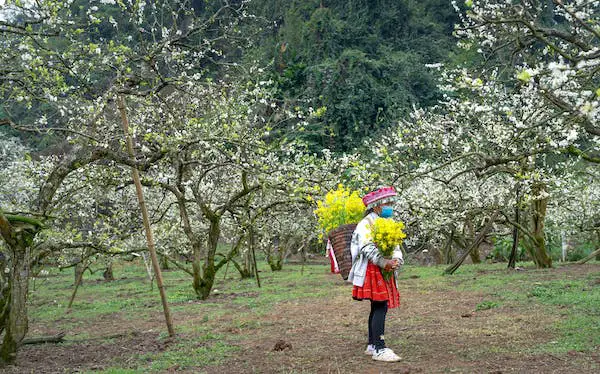
The government had taken steps to promote sustainable development and protect natural resources, including implementing policies to promote renewable energy and protect areas of high biodiversity.
There were also growing public awareness and support for environmental protection, with many grassroots organizations and campaigns promoting environmental sustainability and conservation.
Overall, before the Russian War, Ukraine's environment faced significant challenges, including air and water pollution, deforestation, and loss of biodiversity.
While there were some positive developments in terms of environmental protection, much more needed to be done to address these challenges and promote sustainable development in Ukraine.
Conclusion
In conclusion, before the Russian War, Ukraine was a diverse and dynamic country with a rich history and culture.
It had a population of over 45 million people, with a mix of different ethnic and linguistic groups, and a land area of 603,628 square kilometers. Ukraine had made some progress in areas such as arts and literature, music and dance, cuisine, education, and sports, and had a growing tourism industry.
However, Ukraine faced significant challenges in areas such as politics, economy, infrastructure, and environment. Corruption and political instability were major issues, and the economy was struggling to achieve sustainable growth.
Ukraine's infrastructure was inadequate in many areas, and air and water pollution, deforestation, and loss of biodiversity were significant environmental challenges.
Despite these challenges, Ukraine had made progress in promoting and protecting human rights, and had taken steps to address issues such as gender equality and human trafficking.
The country had a vibrant entertainment industry and a rich cultural heritage, with a thriving arts and literature scene and a diverse music and dance culture.
Overall, before the Russian War, Ukraine was a country with many strengths and opportunities, as well as significant challenges and areas for improvement.
The conflict with Russia has since had a profound impact on Ukraine, causing significant damage to its economy, infrastructure, and social fabric, and undermining the country's progress in many areas.
However, Ukraine remains a resilient and vibrant country, with a rich history and culture, and the potential to overcome these challenges and build a more prosperous and sustainable future.
